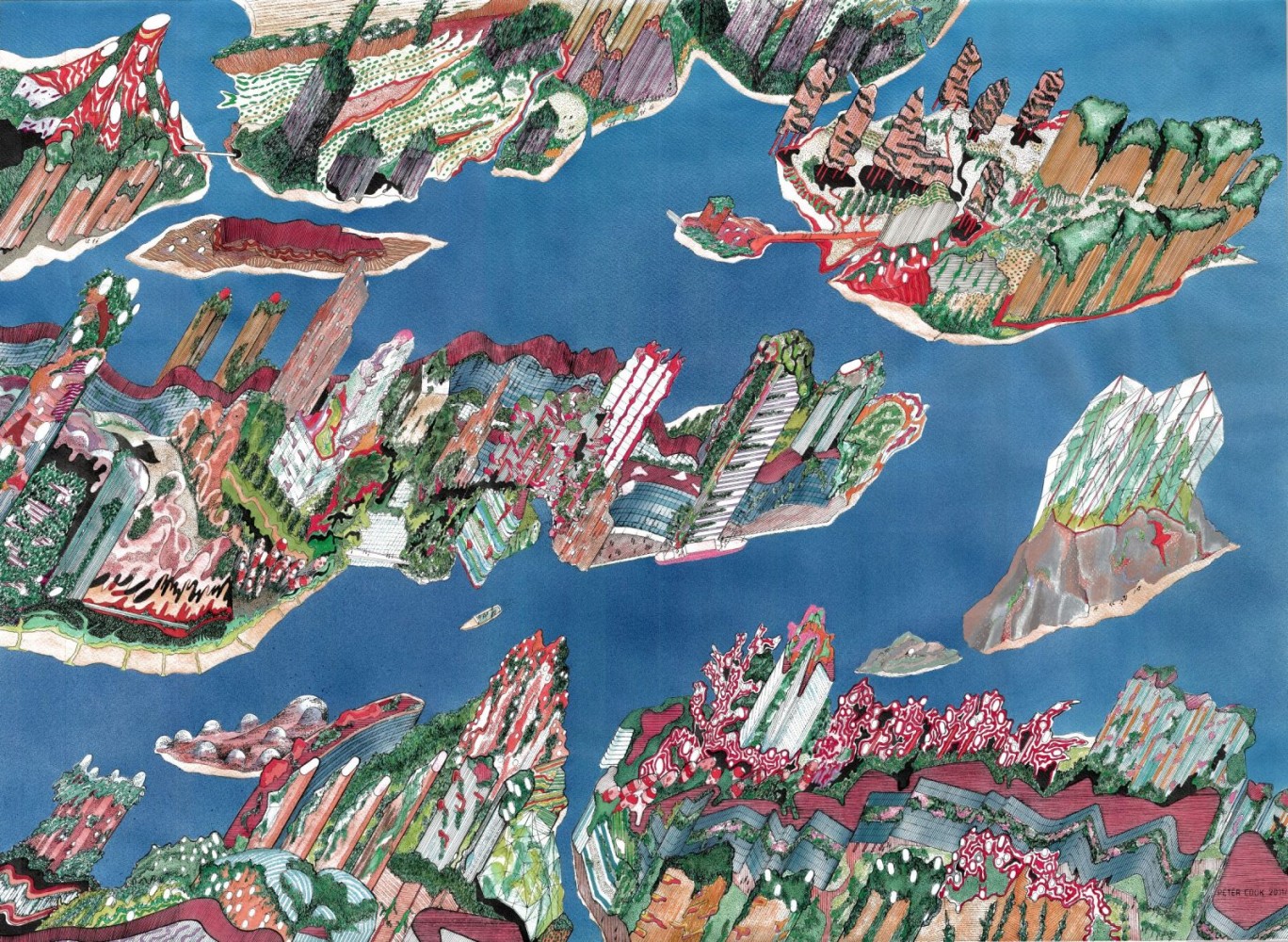Peter Cook
With his visionary ideas and fantastical, imaginative, and colorful drawings, British architect Peter Cook has profoundly influenced and helped shape architecture and architectural thinking for almost six decades.
Since the 1960s, British avant-garde architect and professor Sir Peter Cook (b. 1936) had used drawing as the primary medium to express his alternative and often fantastical ideas and visions. Cook has seen but a relatively small number of his buildings actually erected – including the Kunsthaus Graz in Austria, inaugurated in 2003 and quickly nicknamed “the friendly alien.” However, it is first and foremost the theoretical field of architecture that has been of interest to him: the question of what architecture can and must do and thus also the potential that lies in what Cook himself descrribes as the architect’s most important tool, namely drawing.
The most precise expression for future visions and the best way to discuss these are through drawing, says Peter Cook. It is precisely here, on paper, that there is the most excellent chance of moving away from the prevailing notions of cities and ways of life – detached from the demands and obligations that lie in thinking of concrete solutions and materials. He has thus, to a large extent, remained a so-called “Paper Architect” – a general term for the theoretical thinkers, who from their studio desk have managed to influence architecture and institute new directions.
Cook's drawings can be conceived as suggestions for new ways of shaping the city and inhabiting it. This is a prevalent theme throughout Cook's career, which goes way back to the 1960s and 1970s, when he and the so-called neo-futuristic group Archigram created new and provocative ways of seeing the city of the future. Using drawing and collage, Archigram launched concepts such as Plug-in-City, Walking City, and Instant City. Cook and the rest of the group became an essential voice in the architectural breakthroughs and debates of the time, but at the same time, they helped to plant seeds, which have since resulted in both concrete and distinctive buildings.
Peter Cook's drawings lie somewhere between the fantastical and visionary sketch on the one side and the classical architecture drawing on the other. His urban landscapes all relate to a real place, and a floor plan always accompanies the colorful metamorphoses. However, if one focuses on their seemingly complex entanglements, one will experience how space, concrete building elements, and people who inhabit these organic landscapes appears. For everything is drawn with precision and on a given scale.
